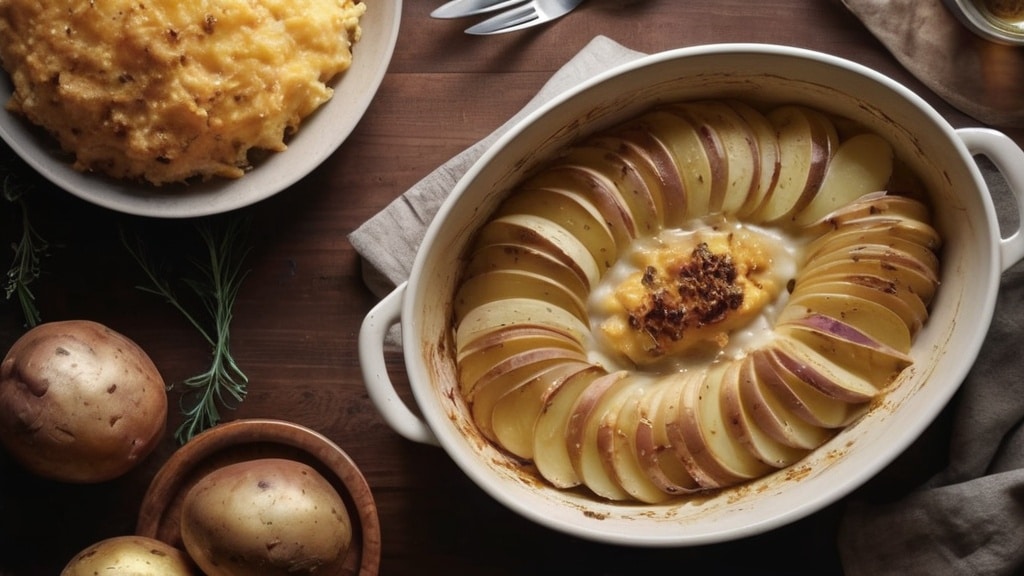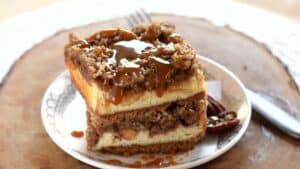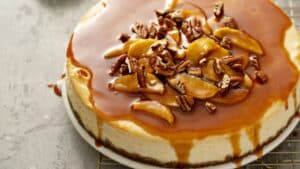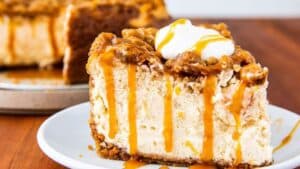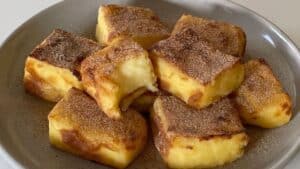Thanksgiving ain’t Thanksgiving without potatoes. You know it, I know it every cook who’s ever sweated over a holiday meal knows it. They anchor the plate. They soak up gravy like a sponge and offer that creamy, carby comfort everybody secretly wants more of, even when they claim they’re “saving room for pie.” This article? It’s for the real ones. The professionals. The ones who obsess over texture, who taste ten versions before plating one. Let’s get serious about the best Thanksgiving potato side dish and why it ain’t what your grandma made.
I’ll say it loud up front: Brown Butter Garlic Mashed Potatoes with Crème Fraîche. That’s the dish. That’s the gold standard. Not your run-of-the-mill mash. We’re talking silk-smooth, deeply savory, faintly nutty potatoes with a whisper of tang, structured to hold their own next to a five-hour turkey.
Let’s dig into it. From starch science to plating psychology.
The Foundation: Choosing the Right Potato
This step gets skipped too often. I’ve seen it a hundred times pros and home cooks alike grabbing whatever’s on sale.
Stop. Doing. That.
The choice of potato can make or break your dish. For a fluffy, creamy mashed potato? Russet is king. High starch, low moisture. Perfectly absorbent. But if you want a bit more structure, that almost velvety resistance to the bite? Go for Yukon Golds. They’re waxier, creamier by default, and they bring this naturally buttery flavor you don’t get from a russet.
I like a 60/40 split. Yukon to russet. That combo gives you depth and fluff in one spoonful. Try it once and you’ll never go back.
Don’t Just Boil. Season and Simmer.
Here’s where people mess up. You don’t just toss chopped potatoes in plain water and let ’em bubble. That’s rookie stuff.
Add kosher salt to the water. Like pasta, the water should taste like the sea. You’re seasoning from the inside out. Throw in a couple smashed garlic cloves and a bay leaf while you’re at it. Subtle aromatics make a difference, even if the average diner can’t put a name to it.
And hey start them cold. Potatoes in hot water? That’s uneven cooking. You’ll get mushy outsides and raw centers. No thanks.
The Mash Matters: Texture Is Everything

Once they’re fork-tender (not falling apart just yielding), drain ‘em. Let them sit for a few minutes. That steam you see rising? That’s water leaving. Good. We don’t want it. Water is the enemy of rich, fluffy mash.
Now, tools. If you’re still mashing with a fork, please upgrade your life. A ricer or food mill gives you that restaurant-level smoothness. A hand masher is fine for rustic, chunky potatoes but we’re not doing rustic today. We’re doing refined, indulgent, borderline sinful.
Important: never use a blender or food processor. You’ll overwork the starch and end up with glue. Disgusting, soul-crushing glue.
Fat Isn’t Optional It’s Strategic
Here’s where we elevate.
Don’t just dump in cold butter and milk. Melt your butter. Better yet, brown it. Gently cook it in a small pan until the milk solids turn golden and nutty and your kitchen smells like toasted heaven. This is where the flavor turns from flat to dimensional.
Now, crème fraîche. A professional’s secret weapon. It’s like sour cream grew up and went to culinary school. Add just a few tablespoons. It brings tang, balance, and a bit of silky body. Milk? No. Heavy cream? Better. But crème fraîche? That’s the finesse move.
Warm all your dairy before you add it in. Cold dairy shocks the starches and clumps up your mash. Warm dairy slides in like velvet.
Season Like You Mean It
Taste and season. Then taste again.
Salt, for sure. But don’t forget white pepper less visual, more floral. You’re not making a peppery dish; you’re making a seasoned one. Optional but genius? A pinch of nutmeg. Just a touch. It lights up the creaminess without making it taste sweet.
Got a more adventurous crowd? A hint of roasted garlic paste stirred in makes people sit up in their chairs. No joke. They won’t know what hit them.
Garnishes That Aren’t Just Pretty
Let’s talk toppings. Your potatoes are perfect. But now they need contrast.
Try this: crisp fried shallots tossed in flour and flash-fried till golden. Add chopped chives or finely sliced green onions for sharpness. For texture? Toasted breadcrumbs tossed in a bit of brown butter and thyme.
If you want that extra culinary flex, drizzle a swirl of brown butter on top right before serving. It pools like liquid gold. Let people see it. That’s flavor and flair in one.
Plating Psychology: The Unsung Art
This gets ignored. Don’t just plop potatoes on a plate.
Swoop them. Use a big spoon. Let the surface get a little wave-like. That shape holds gravy better. Make it deliberate. Intentional. Even with something as humble as mash.
And let’s be real serve them hot. Cold mashed potatoes? That’s a kitchen crime. If you’re doing a large service, hold them in a covered, warm container or use a sous vide setup to keep temp stable. Don’t let all your work go lukewarm.
Variations That Still Work (But Know Why)
You’ll get asked: Can we do roasted garlic? Horseradish? Sweet potatoes? Yeah. You can. But know your audience and your main dish.
Turkey with gravy? Stick with the classics rich, buttery, smooth.
Beef tenderloin or lamb? Horseradish mash can work. It cuts the fat.
Vegetarian table? Sweet potato purée with smoked paprika and a touch of maple can shine but that’s not mashed potatoes. That’s a different dish. Don’t confuse the two.
Science of Starch: Why It All Works
Quick nerd-out: Potatoes are mostly starch and water. When you cook them, the starch granules absorb water and swell. Mash them too much, and they release that starch, turning gluey. That’s why gentleness matters.
Fat coats the starch and keeps the texture smooth. Acid (from crème fraîche or sour cream) balances the richness. Salt enhances it all. It’s chemistry, yeah, but it’s also just good taste.
Addressing Common Mistakes (Because We’ve All Been There)
- Lumpy potatoes? You didn’t cook them long enough or used the wrong mashing tool.
- Gummy texture? You overworked them or used a food processor. Game over.
- Bland flavor? You under-seasoned. Salt is your friend. So are garlic, pepper, and fat.
- Weird aftertaste? Old potatoes or too much raw garlic. Use fresh and roast it first.
Thanksgiving Trends: What’s Changing in 2025?
Food’s never static. In pro kitchens across the country, mashed potatoes are getting micro updates.
We’re seeing:
- Infused butters: Think miso-butter or truffle-ghee blends.
- Alternative milks: Oat milk mash for dairy-free tables, finished with roasted onion oil.
- Global twists: Yuzu zest in sweet potato purée. Harissa-swirled Yukon mash.
But remember the goal is still comfort. Keep the bones of the dish familiar. The twist should be felt, not shouted.
Final Thoughts: What Makes This the Best Thanksgiving Potato Dish?
It hits every single note.
Creamy. Nutty. Tangy. Rich. Balanced. It’s a supporting actor that sometimes steals the show. And when it’s made with intention thoughtful starch, layered fat, gentle seasoning it goes from background noise to center stage.
Professionals don’t just follow recipes. We think through them. We adjust. We taste. We analyze.
Brown Butter Garlic Mashed Potatoes with Crème Fraîche? They’re not just the best Thanksgiving potato dish. They’re a masterclass in subtlety. A dish that knows when to stand back and when to shine.
Now go make ‘em. And make ’em unforgettable.
Would you like a printable chef-tested recipe card for this dish?
